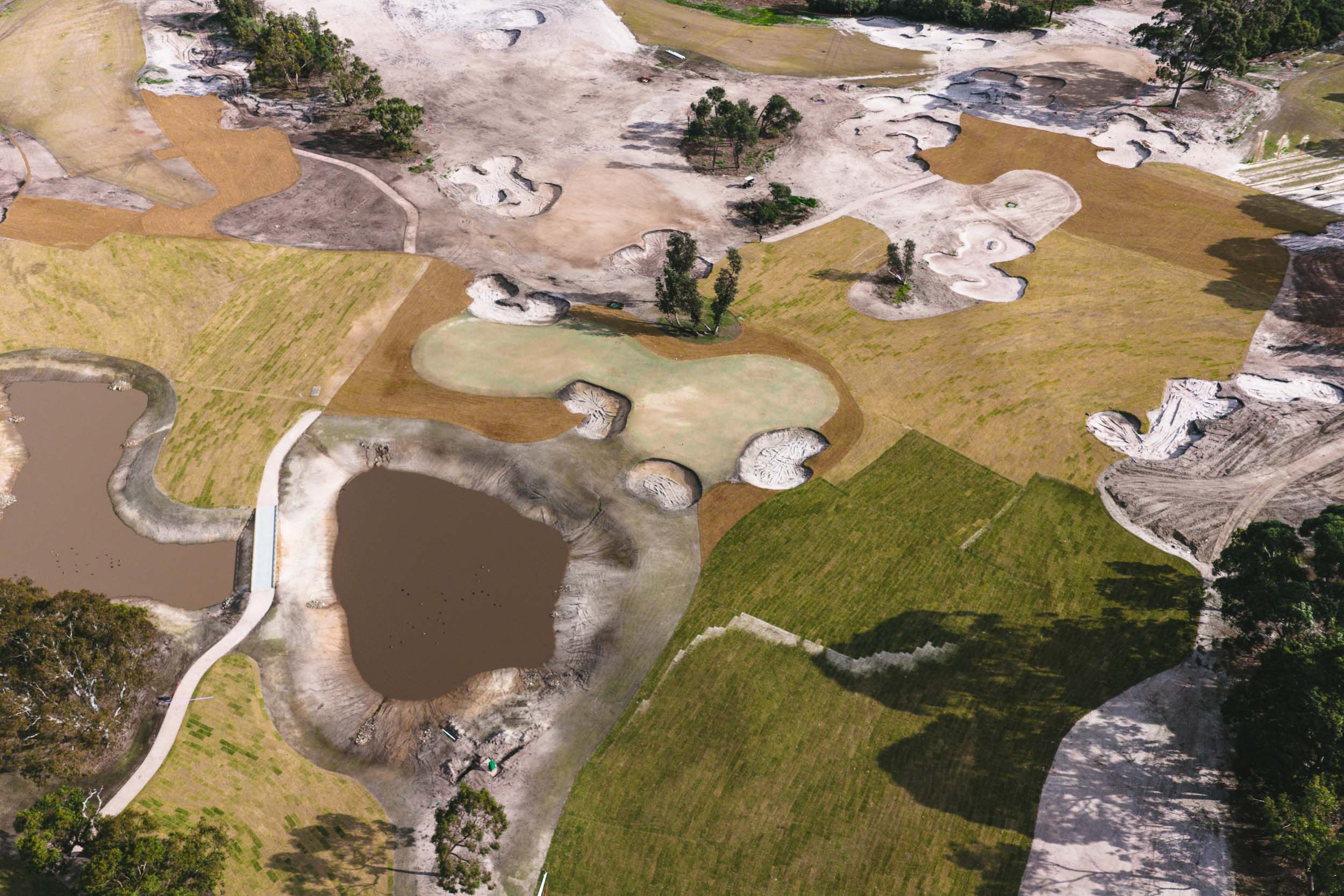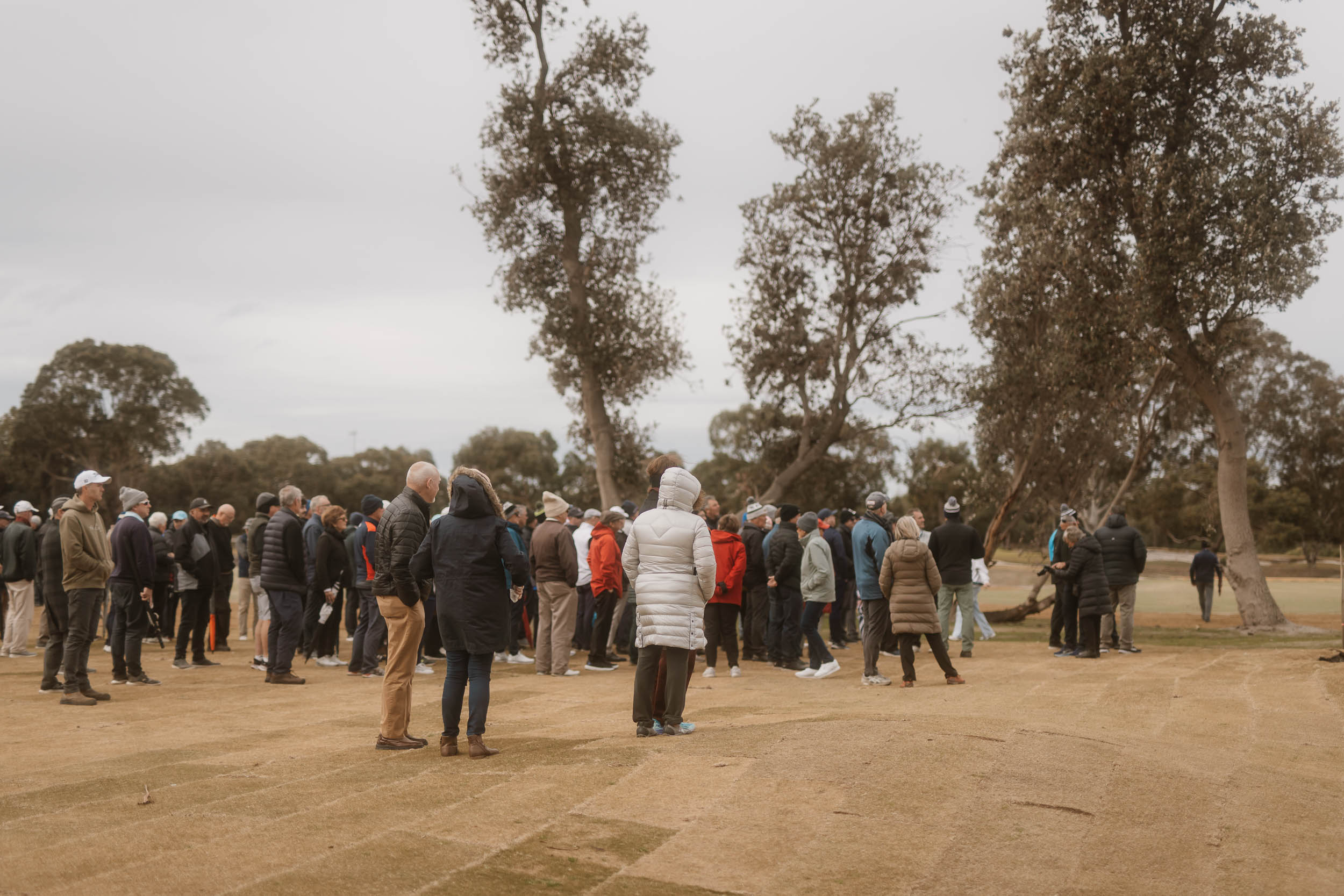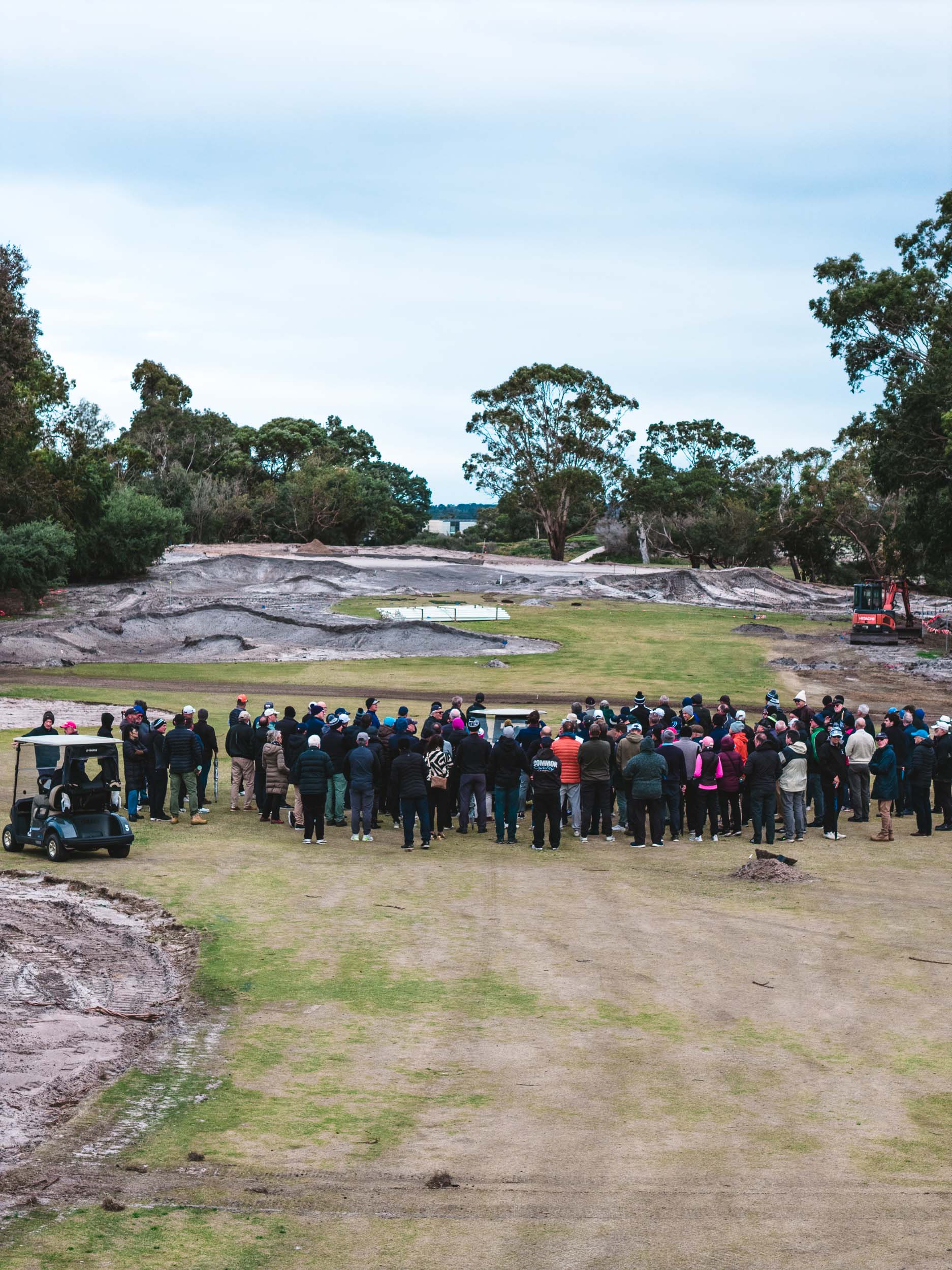The National Journal Presents
Climbing Heartbreak Hill
Ashley Mead from OCM Golf and Golf Course Manager at The National, Leigh Yanner take us through the dramatic changes taking place on the northern end of the property
Featuring quotes from Ashley Mead and Leigh Yanner.
Written, Filmed & Photographed by William Watt
The threatening storm clouds and gusty winds couldn’t deter around 125 members of The National from gathering at 2pm on Sunday, July 13th for the latest Long Island course walk. Armed with a portable speaker system to combat the breeze, Ashley Mead from OCM Golf and Leigh Yanner, The National’s Golf Course Manager, led the group through 90 minutes of construction updates, technical explanations, and revealing glimpses of the emerging layout.
“It’s a windy day today and there is a lot of dirt and dust out there, so just be mindful of that,” Leigh warned the group at the outset. “Also be mindful it is still a construction site, so don’t wander off!”

Long Island – July Course Walk with Ashley Mead and Leigh Yanner
Starting at the Seventeenth
The walk commenced at what members knew as the 19th green practice area, now being transformed into the new 17th fairway. Ash explained the hole’s new dual personality.
“So the new par five will play straight down from behind us here,” he gestured toward the old practice range. “You’ll see there are some central fairway bunkers from this angle, and then the hole will wrap around to the left into the original 17th hole.” The strategic elements of this new par-5 quickly became apparent. “You really want to be either over those bunkers or, if you can’t get over them, you want to probably be straight in line with them,” Ashley explained. “Every meter that you err to the left of this hole, away from those bunkers, will start to block you out with the ground contours, so you won’t see a lot of the ground behind it unless you’re in-line with or over those bunkers.”
The Plateau Green Returns
Moving to the sixteenth, Ashley revealed a historical detail that caught many by surprise. “When we read through the old history notes, there was a section of green up on the left hand side. I can never remember playing it as a kid, and my father’s been here for sort of 50 plus years and he never talked about it, but they talked about an old green being up on the left, which was called the plateau green.”
This plateau green has been reinstated, creating a dramatic two-tiered putting surface. “See where the brown pile of sand is up on the left hand side, that is near the left edge of this green now,” he pointed out. The tier dividing the two sections sits at about waist height, creating significant strategic considerations.
“A little bit of local knowledge here that you are going get that no one else is going to get,” Ashley confided. “If you were to hit it straight to that little white pipe on the ground, that’s pretty much the front of the green. Everything’s going to kick a long way right from that point because of the big slope that divides the two sections of green. So it means you need to be really strategic off the tee to make sure you’re angle in takes that into account.”
Wetland Works and Grow-in Challenges
Standing near the restored wetland, complete with its new boardwalk, the group learned about the extensive drainage work undertaken. “Over two kilometres of drainage has been installed on that fairway,” Leigh revealed about the notoriously wet second fairway. “What we’ve installed are two sump pumps… they’ve got electricity going into those pumps, and that allowed us to have deep drainage fall across the fairway.”
The technical challenges of Melbourne’s climate became apparent as Leigh pointed to a recently seeded green. “That green was done three weeks ago and it’s hardly done anything. It’s just too cold,” he explained. “All the turf we’ve laid in the last three weeks actually won’t even take any root. It’ll just sit there, stay dormant, and then as the warm weather starts to come in, it’ll actually start to take root and green up.”


Hidden Tees and Design Philosophy
One of the more subtle but important aspects Ashley highlighted was the effort to hide alternate tees within the landscape. “One of the challenges of building this type of golf course is that there’s so many different tees, and some of the tees are in fairway that you don’t want to have tees sort of poked up out of the ground because it’s gonna look unnatural when you’re playing those holes,” he explained.
“So a lot of the tees that we are building, you really don’t see. They’re quite low profile and they’ll have little undulations around them. They’re still flat on the top on the teeing grounds, but they’re not obvious.”
Throughout the walk, spontaneous conversations revealed member sentiment. “If somebody had blindfolded me and said, I’ve transported you to a golf course… I would’ve said without hesitation, Kingston Heath,” he told Ashley. “It’s just an amazing transformation.”
Another member’s assessment was more measured but equally positive: “The initial feedback I’m getting is that people think there’s more bunkers, but is that a fact?” When Ashley confirmed there were indeed more bunkers, he also added, “But the fairways are wider too. So there’s actually more area of fairway overall, but we’re bringing in a lot more strategy into the design through those bunkers.”
The strategic implications weren’t lost on the members. One observed to his companion: “You really have to shape the ball now. For a low handicapper, who can hit a reasonable way, the bunkering will be right in play for them. It’ll definitely be a very strategic golf course.”
The Marathon Continues
As the 80-minute walk drew to a close near the putting green area, with the bowling green building scheduled for demolition in mid-July, Leigh offered a candid assessment of where things stood.
“It’s like a marathon for us at the moment. We’re at Heartbreak Hill. We can see the finish line, but we have to get over it,” he said. “So all the little things you might say to the staff, ‘Gee, you’re doing an impressive job,’ that’s exactly what we need at the moment.”
Parting Thoughts
“I cannot believe what I saw today,” one 35-year member said simply. “Exceeded my expectations.”
For those who couldn’t attend, the key takeaways were clear: the project remains on schedule despite the challenging winter conditions, the technical sophistication of the drainage and irrigation work is impressive, and the emerging golf holes are revealing the land’s natural Sandbelt character in ways that hadn’t been visible for decades.





